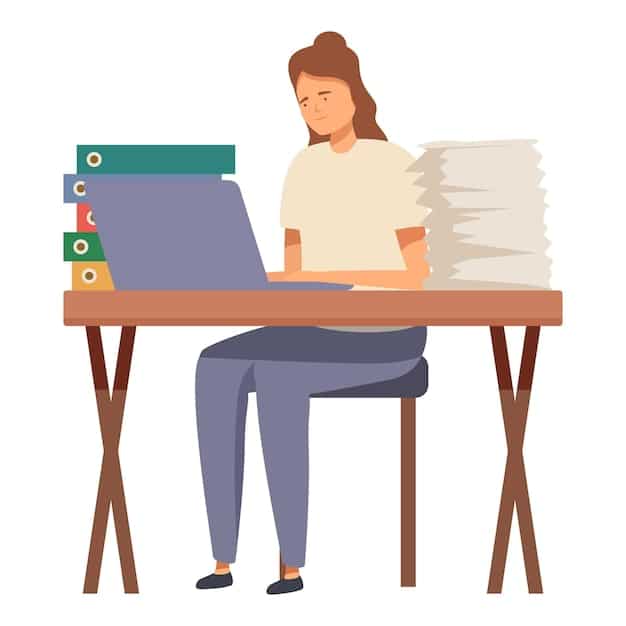Federal Student Loan Forgiveness: Your 2025 Guide to Eligibility & Application
Federal Student Loan Forgiveness Programs offer eligible borrowers a chance to have their remaining student loan balance canceled after meeting specific requirements, such as working in public service or teaching.
Navigating the world of student loans can be overwhelming, especially when considering repayment options. Thankfully, the government offers several federal student loan forgiveness programs designed to help ease the burden for eligible borrowers in 2025. This guide provides crucial information about eligibility requirements and application tips to help you explore these opportunities.
Understanding Federal Student Loan Forgiveness Programs
Federal student loan forgiveness programs aim to provide debt relief to borrowers who meet specific criteria. These programs are designed to support individuals in certain professions or those facing financial hardships. Knowing the types of forgiveness programs available is the first step toward finding a suitable option.
Types of Federal Student Loan Forgiveness
- Public Service Loan Forgiveness (PSLF): For those employed by a government or qualifying non-profit organization.
- Teacher Loan Forgiveness: Available to teachers who serve in low-income schools for a specified period.
- Income-Driven Repayment (IDR) Forgiveness: Offers forgiveness after a set number of years on an income-driven repayment plan.
- Closed School Discharge: Applies when a school closes while you are enrolled or shortly after you withdraw.
Each program has unique requirements and benefits, making it essential to research your options carefully. The PSLF program, for example, requires 120 qualifying payments while working for a qualifying employer. On the other hand, Teacher Loan Forgiveness requires five complete and consecutive years of teaching service.

Understanding these nuances can greatly impact your eligibility and the amount of debt that can be forgiven. Choosing the right program can significantly reduce your financial stress and help you achieve long-term financial stability.
Eligibility Criteria for Loan Forgiveness in 2025
Meeting the eligibility criteria is paramount to qualify for federal student loan forgiveness. These criteria often revolve around the type of loan, employment, and repayment plans. Ignoring any of these requirements could lead to disqualification.
Loan Types Eligible for Forgiveness
Generally, federal Direct Loans are eligible for most forgiveness programs. However, Perkins Loans and Federal Family Education Loan (FFEL) Program loans may require consolidation into a Direct Consolidation Loan to become eligible for programs like PSLF.
- Direct Subsidized Loans: Often eligible for forgiveness programs.
- Direct Unsubsidized Loans: Generally eligible, but requirements may vary.
- Direct PLUS Loans: Parent PLUS Loans may have specific requirements.
Private student loans are typically not eligible for federal forgiveness programs. Borrowers with FFEL or Perkins Loans should explore consolidating them to access a wider range of forgiveness options.
Employment Requirements
Certain forgiveness programs, like PSLF and Teacher Loan Forgiveness, demand specific employment conditions. Working for a qualifying employer or in a designated teaching role is essential for eligibility.
For PSLF, you must be employed full-time by a U.S. federal, state, local, or tribal government, or a non-profit organization that is tax-exempt under Section 501(c)(3) of the Internal Revenue Code. Teacher Loan Forgiveness requires full-time teaching for five consecutive and complete academic years in a low-income elementary or secondary school.
It’s crucial to verify that your employer qualifies under the program’s guidelines to avoid any surprises later. Maintaining continuous employment during the qualifying period is also vital.
Navigating the Application Process for Loan Forgiveness
Applying for federal student loan forgiveness involves several steps, including gathering necessary documentation and submitting the application accurately. Proper preparation can streamline the process and increase your chances of approval.
Start by gathering all required documents, such as employment verification forms, loan statements, and any other documentation specified by the program. Make sure all information is accurate and consistent.

Step-by-Step Application Guide
- Complete the application form: Fill out all sections accurately and truthfully.
- Gather supporting documents: Include employment verification, loan statements, etc.
- Submit the application: Send the application to the correct loan servicer or agency.
After submitting the application, keep a copy for your records and follow up with your loan servicer to ensure it was received and is being processed. Be patient, as processing times can vary.
Double-checking every detail and following the instructions carefully can significantly improve your chances of a successful application.
Common Mistakes to Avoid When Applying
Many borrowers inadvertently make mistakes that can delay or even disqualify their applications for student loan forgiveness. Recognizing these pitfalls can help ensure a smoother process.
Inaccurate Information
Providing incorrect or incomplete information is a common mistake. Ensure all details, such as your employer’s name and your loan account numbers, are accurate.
Missing Deadlines
Failing to meet deadlines is another frequent issue. Keep track of all application deadlines and submit your paperwork well in advance to avoid any last-minute problems.
Neglecting Documentation
Omitting required documentation is also a critical error. Always include all necessary documents, such as employment verification forms and loan statements, to support your application.
Being meticulous and double-checking your application for common errors can save you time and frustration, ultimately increasing your chances of approval.
Maximizing Your Chances of Approval
While eligibility and accurate application are crucial, there are additional steps you can take to maximize your chances of getting approved for federal student loan forgiveness. These include proactive communication and meticulous record-keeping.
Staying Informed
Keep abreast of any policy changes or updates to the forgiveness programs. Loan forgiveness programs are subject to change, and knowing the latest rules can help you stay compliant.
Maintaining Communication
Communicate regularly with your loan servicer. Keep your contact information up-to-date and promptly respond to any requests for additional information.
Keeping Records
Maintain detailed records of all payments, employment, and communications related to your student loans and the forgiveness program. This documentation can be invaluable if any issues arise.
By staying informed, communicating effectively, and maintaining thorough records, you can demonstrate your commitment to fulfilling the program requirements and increase your likelihood of approval.
Resources and Support for Loan Forgiveness Applicants
Navigating the complexities of federal student loan forgiveness programs can be easier with the right resources and support. Various organizations and agencies provide guidance and assistance to borrowers.
Federal Student Aid Website
The U.S. Department of Education’s Federal Student Aid website is a comprehensive resource for information about federal student loans and forgiveness programs. Here you can find details on eligibility, application processes, and program updates.
Non-Profit Organizations
Several non-profit organizations offer free or low-cost student loan counseling and assistance. These organizations can help you understand your options, navigate the application process, and resolve any issues that may arise.
Loan Servicers
Your loan servicer is another valuable resource. They can provide information about your loan balance, repayment options, and eligibility for forgiveness programs. Contact your servicer with any questions or concerns you may have.
Utilizing these resources can provide you with the knowledge and support you need to successfully navigate the student loan forgiveness process.
| Key Point | Brief Description |
|---|---|
| 🔑 Eligibility | Varies by program; check loan type and employment requirements. |
| 📝 Application | Complete form accurately, gather documents, and meet deadlines. |
| 🚫 Mistakes | Avoid inaccurate info, missed deadlines, and neglected documents. |
| ✅ Maximizing | Stay informed, communicate, and keep detailed records. |
Frequently Asked Questions (FAQ)
▼
PSLF forgives the remaining balance on your Direct Loans after you’ve made 120 qualifying monthly payments while working full-time for a qualifying employer, such as a government organization or non-profit.
▼
Teachers who have taught full-time for five complete and consecutive academic years in a low-income elementary or secondary school may qualify. Certain requirements about the loan types apply.
▼
No, private student loans are not eligible for federal student loan forgiveness programs. These programs only apply to federal student loans, such as Direct Loans, FFEL loans, and Perkins Loans.
▼
If your application is denied, review the reason for denial and gather any additional documentation that may address the issues. You can also appeal the decision or explore alternative repayment options.
▼
You can use the PSLF Help Tool on the Federal Student Aid website to determine if your employer qualifies. The tool will guide you through the process and provide you with confirmation of your employer’s eligibility.
Conclusion
Understanding and navigating federal student loan forgiveness programs can offer a significant financial reprieve. By carefully reviewing eligibility criteria, avoiding common application mistakes, and utilizing available resources, borrowers can increase their chances of securing loan forgiveness and achieving long-term financial well-being in 2025.





